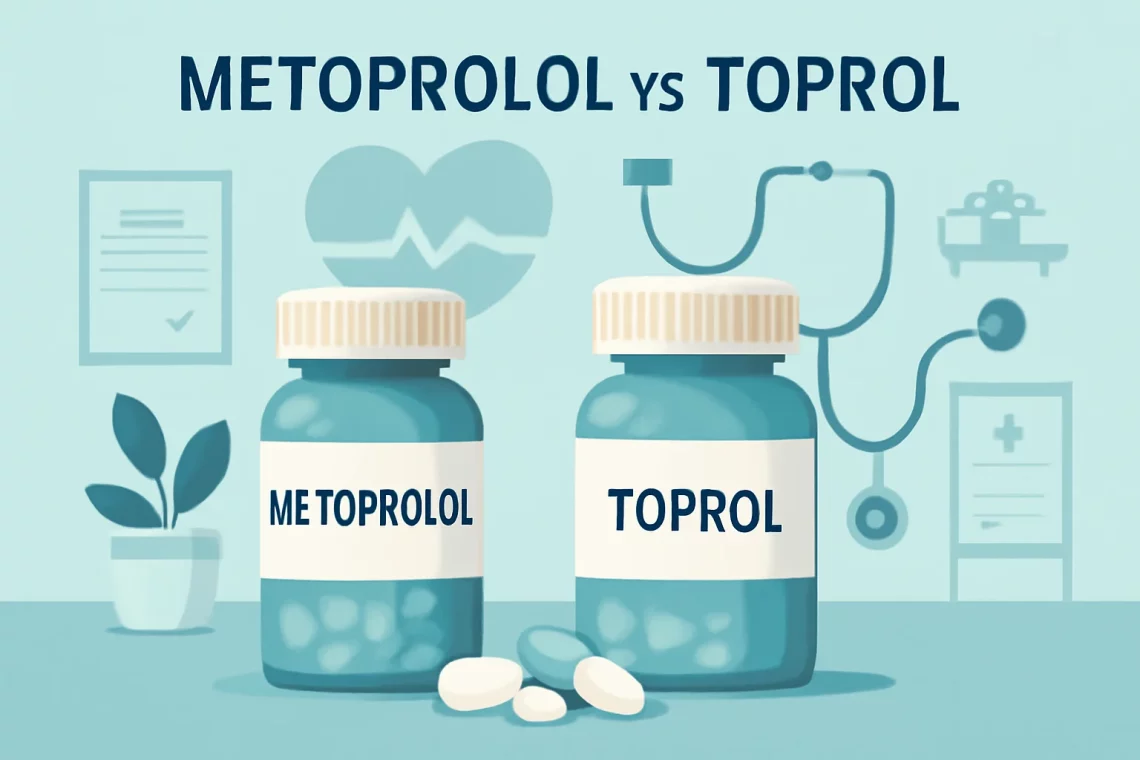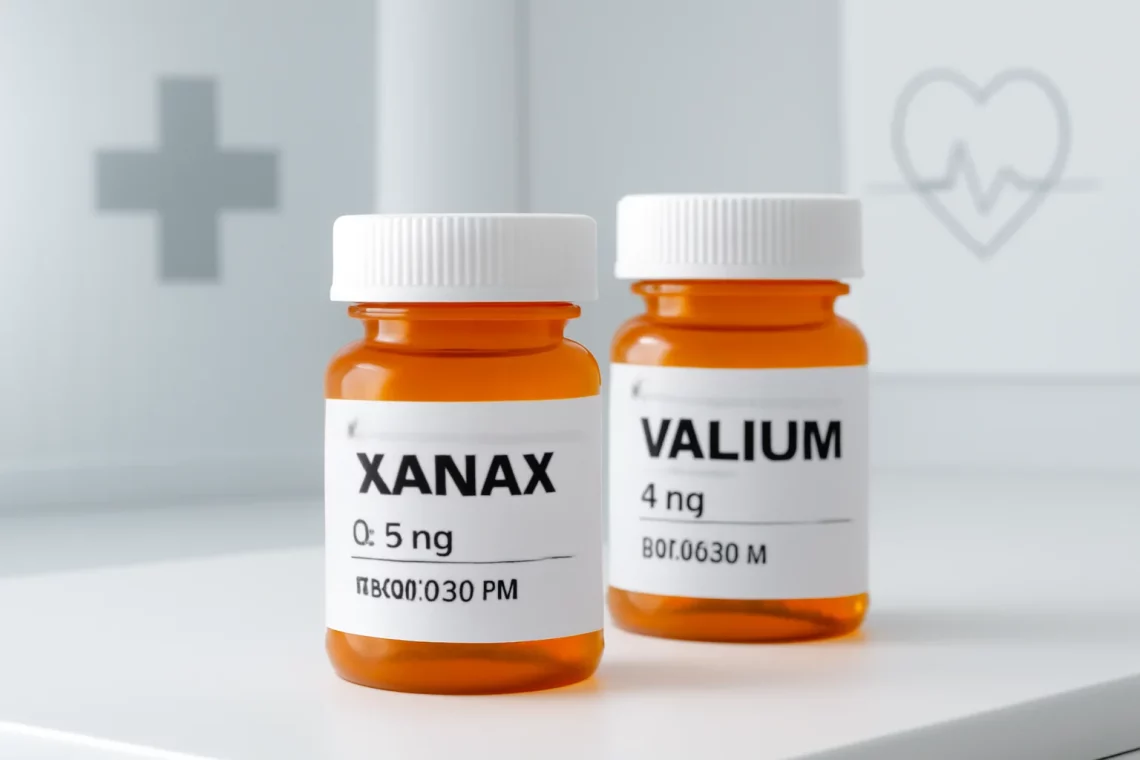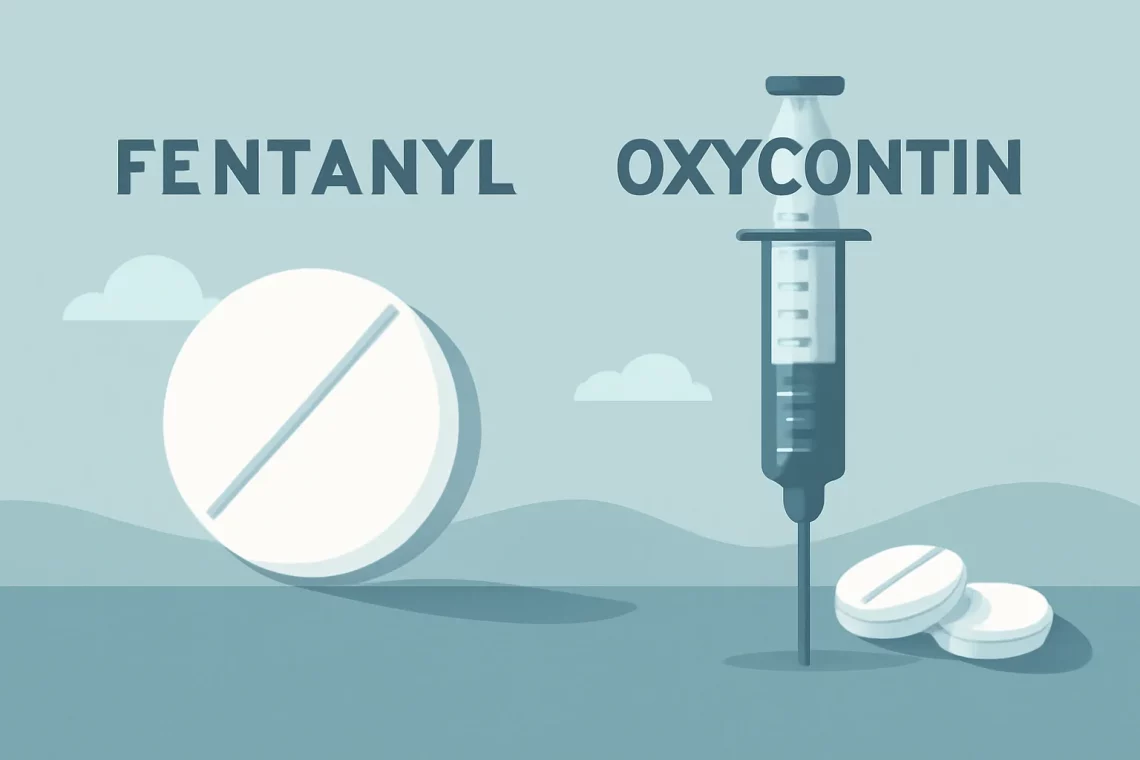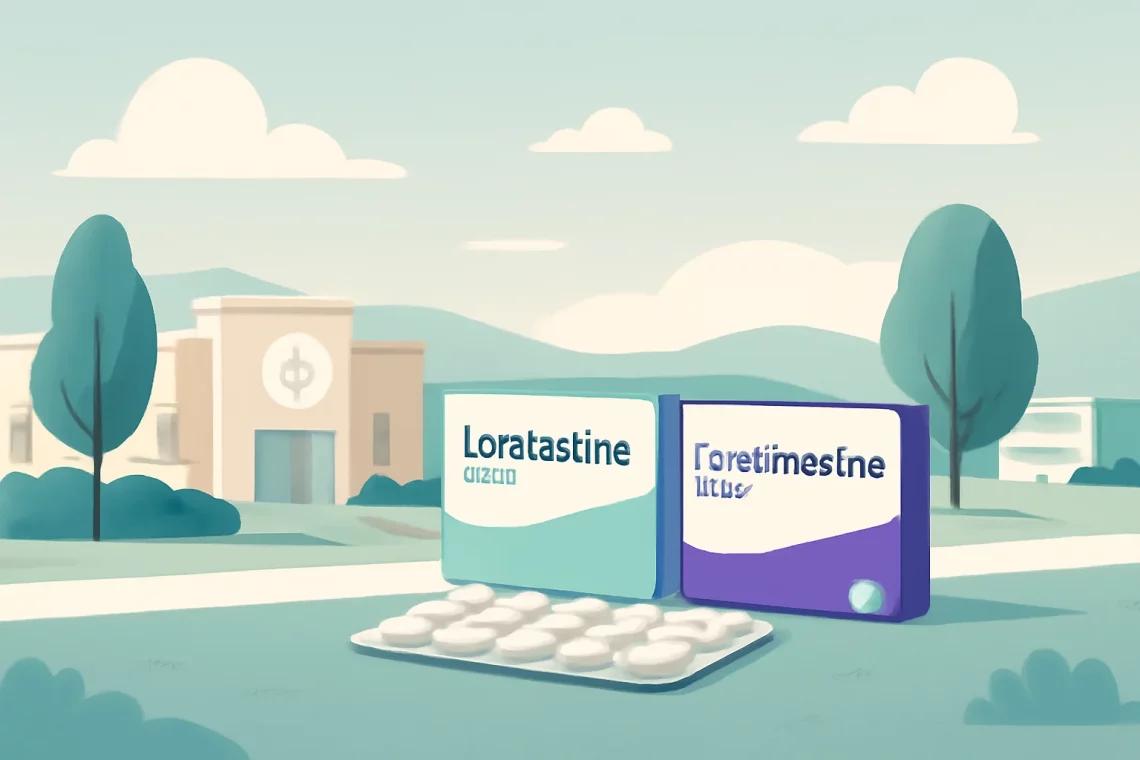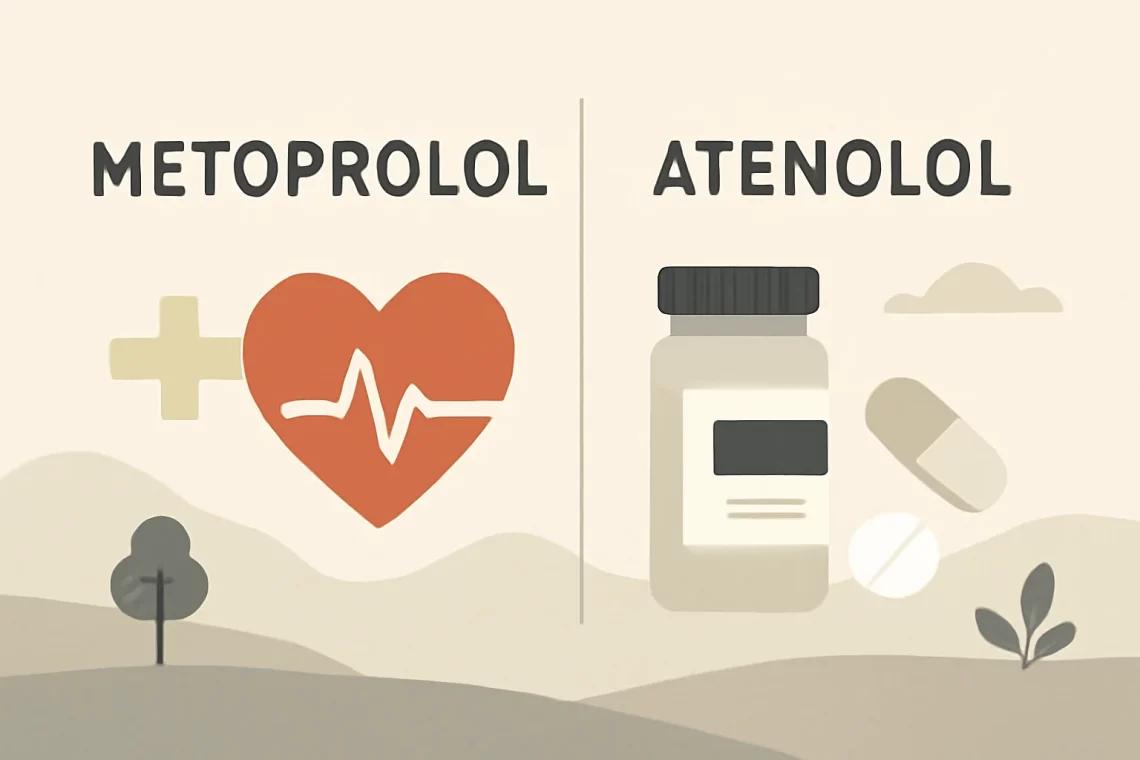-
Buspirone vs Hydroxyzine: Which Anxiety Medication is Right for You?
In the realm of mental health and anxiety management, medication plays a crucial role for many individuals seeking relief from their symptoms. Among the various options available, Buspirone and Hydroxyzine are two medications often discussed for their effectiveness in treating anxiety-related conditions. While both belong to the broader category of anxiolytics, they differ significantly in their mechanisms of action, side effects, and overall use cases. Understanding these differences is vital for anyone considering treatment options for anxiety or related disorders. Both medications offer unique benefits and potential drawbacks, making it essential for individuals to evaluate their personal health needs and consult with healthcare professionals. The choice between Buspirone and Hydroxyzine…
-
Metoprolol vs Toprol: Understanding the Key Differences and Uses
Metoprolol and Toprol are two terms often used interchangeably in the world of cardiovascular medications. These medications belong to a class known as beta-blockers, which are primarily used to manage high blood pressure, heart rhythm disorders, and other heart-related conditions. Despite their similarities, it is crucial to understand that Metoprolol and Toprol, while closely related, are not exactly the same. Their differences can significantly impact how they are prescribed and how they function in the body. Beta-blockers like Metoprolol work by blocking the effects of adrenaline on the heart and blood vessels. This action leads to a decrease in heart rate and blood pressure, making it easier for the heart…
-
Lyrica vs Neurontin: Choosing the Right Treatment for Nerve Pain
Lyrica and Neurontin are two medications commonly used to treat nerve pain and other neurological conditions. While they are often mentioned in conjunction with each other, these drugs have distinct properties and uses. Both medications belong to a class known as anticonvulsants, but they have different mechanisms of action, side effects, and indications. Understanding these differences is crucial for patients and healthcare providers alike, as it can help optimize treatment strategies for various conditions, including neuropathic pain, fibromyalgia, and seizures. The growing prevalence of chronic pain and neurological disorders has led to an increased demand for effective pain management options. Patients are increasingly seeking alternatives to traditional pain relievers, prompting…
-
Meloxicam vs Indomethacin: Which Anti-Inflammatory is Better?
Meloxicam and indomethacin are both nonsteroidal anti-inflammatory drugs (NSAIDs) commonly used to relieve pain, reduce inflammation, and enhance mobility in individuals suffering from various conditions such as arthritis, osteoarthritis, and other musculoskeletal disorders. They belong to a class of medications known for their effectiveness in treating pain and inflammation by inhibiting specific enzymes that contribute to the production of inflammatory substances in the body. While both medications are effective in managing symptoms, they possess distinct characteristics, mechanisms of action, and potential side effects that can influence a healthcare provider’s choice in prescribing them. Understanding the differences and similarities between meloxicam and indomethacin is crucial for patients and healthcare professionals alike.…
-
Tramadol vs Hydrocodone: Key Differences and Similarities Explained
The use of prescription medications for pain management has become increasingly common in recent years. Among these medications, Tramadol and Hydrocodone are two widely prescribed options that serve as effective analgesics. Both drugs belong to the class of opioids, but they have different mechanisms of action, side effects, and potential for addiction. As pain management continues to evolve, understanding the differences and similarities between these two medications is crucial for patients, healthcare providers, and caregivers. Tramadol is a synthetic opioid that works by binding to the brain’s pain receptors, while also inhibiting the reuptake of neurotransmitters like serotonin and norepinephrine. This dual mechanism allows Tramadol to provide relief from moderate…
-
Xanax vs Valium: Understanding the Differences and Uses
The use of benzodiazepines has become increasingly prevalent in modern medicine, particularly for the treatment of anxiety and panic disorders. Two of the most commonly prescribed medications in this category are Xanax and Valium. Both of these drugs are known for their effectiveness in alleviating symptoms of anxiety, but they possess unique properties that set them apart. As the understanding of mental health continues to evolve, it is essential to examine these medications closely to determine which may be more appropriate for various conditions. In the realm of mental health treatment, the importance of medication cannot be overstated. Patients often seek relief from overwhelming feelings of anxiety, panic, or stress,…
-
Fentanyl vs OxyContin: Understanding the Key Differences and Risks
Fentanyl and OxyContin are two powerful medications that belong to the opioid class, commonly used for pain management. Despite their effectiveness, they come with significant risks and potential for abuse. Opioids have been at the forefront of discussions regarding public health, especially given the alarming rise in opioid-related overdoses and deaths. Both fentanyl and OxyContin have been implicated in this crisis, raising important questions about their safety, efficacy, and the contexts in which they are prescribed. Fentanyl is a synthetic opioid that is estimated to be 50 to 100 times more potent than morphine. It is often used in medical settings for severe pain management, particularly in patients who are…
-
Loratadine vs Fexofenadine: Which Antihistamine is Right for You?
Allergies are a common concern for many individuals, affecting millions worldwide. As the seasons change, pollen and other allergens become prevalent, leading to a surge in allergic reactions. Symptoms such as sneezing, nasal congestion, and itchy eyes can significantly impact daily life. To combat these discomforts, various antihistamines are available, each with its unique properties and effectiveness. Among the most popular options are loratadine and fexofenadine, both of which are second-generation antihistamines. These medications are designed to alleviate allergy symptoms without causing excessive drowsiness, a common side effect associated with first-generation antihistamines. Understanding the differences between loratadine and fexofenadine is essential for individuals seeking relief from allergies. While both medications…
-
Azithromycin vs Biaxin: Key Differences and Similarities Explained
Azithromycin and Biaxin are two widely recognized antibiotics that play crucial roles in the treatment of various bacterial infections. Both medications are part of the macrolide class of antibiotics, which are known for their effectiveness in combating a range of pathogens. Azithromycin is often praised for its broad spectrum of activity and convenient dosing regimen, while Biaxin, or clarithromycin, is noted for its potency and effectiveness in treating specific infections. Understanding the differences, uses, and potential side effects of these two medications is essential for both healthcare professionals and patients alike. As antibiotic resistance continues to rise, the selection of the appropriate antibiotic becomes increasingly important. This not only helps…
-
Metoprolol vs Atenolol: Key Differences and Similarities Explained
Metoprolol and atenolol are two widely prescribed medications belonging to a class of drugs known as beta-blockers. These medications are primarily used to manage cardiovascular conditions, including hypertension, heart failure, and certain types of arrhythmias. Both metoprolol and atenolol function by blocking the effects of adrenaline on the heart and blood vessels, leading to a decrease in heart rate and blood pressure. This mechanism of action makes them effective in reducing the workload on the heart and improving overall cardiovascular health. The choice between metoprolol and atenolol can depend on various factors, including the specific health condition being treated, patient response to medication, and potential side effects. While both drugs…




